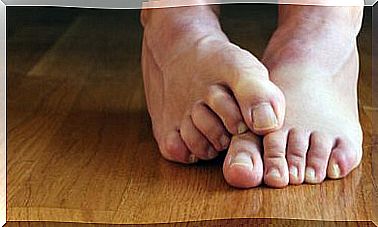Living With A Chronic Disease: Tips And Advice
Living with a chronic disease currently represents something more everyday than we can imagine in the general population. These conditions are also known as “non-communicable” to distinguish them from infections.
It is estimated that in the world there are 63% of deaths attributable to these disorders and that a third of them are, in principle, among people under 60 years of age. These data from the World Health Organization reveal the complexity of the problem.
We can mention as examples diabetes, high blood pressure, fibromyalgia, hypothyroidism and cancers. There are many more, each with its own peculiarities.
In itself, it is considered that there is chronicity when the duration of the pathology is prolonged in time. A reference measure is usually 6 months, although it does not always apply as a limit to differentiate them from acute ones.
Coping with the diagnosis of a chronic disease
Living with a chronic illness begins with the event of the diagnosis. Sometimes it is something incidental that appears in the course of other examinations and other times it is a specific search carried out by a health professional for the suspicion that they carry certain symptoms.
There are early diagnoses in people’s lives and others that appear when adulthood is already beginning. Take the example of diabetes, which in its type 1 (insulin-dependent) manifests itself from childhood. These patients will suffer from the restrictions of the diabetic diet since they are children.
On the other hand, we have type 2 (non-insulin dependent) that, as a general rule, is diagnosed in adults between 30 and 50 years of age more frequently. Here a series of habit changes are imposed that can be very difficult to assume in the context of an existence that already had its routines.

Stages
The coping process is part of the challenge of living with a chronic illness. When a person is diagnosed, they usually go through a series of psychological and behavioral phases that, with some differences, are repeated among chronic patients:
- Initial reaction: a whirlwind of feelings approach the chronic patient when he receives the diagnosis. This is normal and expected. It depends, to a large extent, on the personality and the social fabric that surrounds the person.
- Learning: once the cataract of emotions is overcome, the fact of living with a chronic disease becomes a reality that needs to be learned. It is common for patients to begin to learn more in detail about the condition, the treatments and the approaches.
- Normalization: the last stage is to assume that it is necessary to live with the chronic disease, even if it is not pleasant. The person is better associated with treatments and changes in habits. In any case, this phase oscillates between better and worse times.
Styles
In addition to these stages, scientific studies have postulated coping styles that, to a greater or lesser extent, are associated with the quality of the experience of chronic disease:
- Active and focused on problem solving: This coping style is proactive. The person tries to improve his state of health and is informed about the existing alternatives. He understands that it depends, to a large extent, on his predisposition. Make regular visits to the doctor and engage your social network.
- Avoidant and focused on emotion: people who decide to live their chronic disease from avoidance seek alternatives to deny the existence of the pathology or discard treatments. They consider that there is nothing they can do to improve the clinical picture and tend to indulge in the natural evolution of the symptoms.
Chronic diseases and emotional impact
Living with a chronic illness is expected to change emotions during the process. We are talking about long phases, with better or worse acceptance of the diagnosis and prognosis. Chronic pathologies demand a lot of energy, even if it does not seem like it or gives the impression that a sedentary existence is led.
The energy consumed derives from the mental and emotional effort that must be made to assume the condition on a daily basis. Depression, anger and fears consume internal resources, and require a renewal of commitments.
The overwhelm is frequent. This feeling is that of being overwhelmed by reality, believing that nothing can be done to stop evolution. When it is combined with a distortion of the personal image, the effect is serious and has consequences in the approach of the changes of habits.
Finding yourself different in front of the mirror or discovering yourself with feelings that were unknown is somewhat destabilizing. Living with a chronic illness is constantly learning about who we are and how we can react.
Tips for Coping with a Chronic Illness
We share here some tips for living with a chronic disease. Although each pathology is different, as you have seen, there are similar phases for all patients.
Know the disease
Information is essential, both about the treatments and about the pathology itself. It is important that the patient knows as much as possible about the condition, which will help to comply with the indications and understand why one or the other sign is evident.
Having this information reduces anxiety as you learn to wait for what is to come. In the same way, adherence to professional indications is increased.

Manage resources
Many chronic diseases consume energy, as we well anticipated. This is serious as time passes, as it can become a vicious cycle that leads to less and less desire to do things.
If the chronic patient recognizes that this process is ongoing, then he will manage his strength, his time and even his material resources. It is not a minor fact that these disorders involve high and sustained expenses between medications, dietary modifications and complementary tests.
Become active
The proactive style of living with a chronic disease is associated with better results in the medium and long term. Letting time go by without doing anything is the worst decision, as the body adapts to laziness and accelerates the evolution of chronic disorders.
Trying to maintain a life with relative normality, within the limitations of the condition, is the objective. For this, family and friends play an important role, who can create favorable environments and facilitators of well-being.
Understand your own emotions and those of others
Emotions fluctuate frequently in chronic patients. But also the feelings of those close to them are modified, oscillating between stages of acceptance and others of denial, of lesser and greater support. It is important that people understand this and do not consider it something strange.
Living with a chronic illness is difficult, not impossible
It is not impossible to live with a chronic illness in tow. On the contrary, more and more people in the world suffer from them and the better survivors are thanks to scientific advances. Therefore, it is essential to learn to deal with symptoms and feelings.
If you need help, do not hesitate to request it. Sometimes support is required from family or friends, and also from a health professional for more technical issues. Be that as it may, both groups are pillars in this coping.









